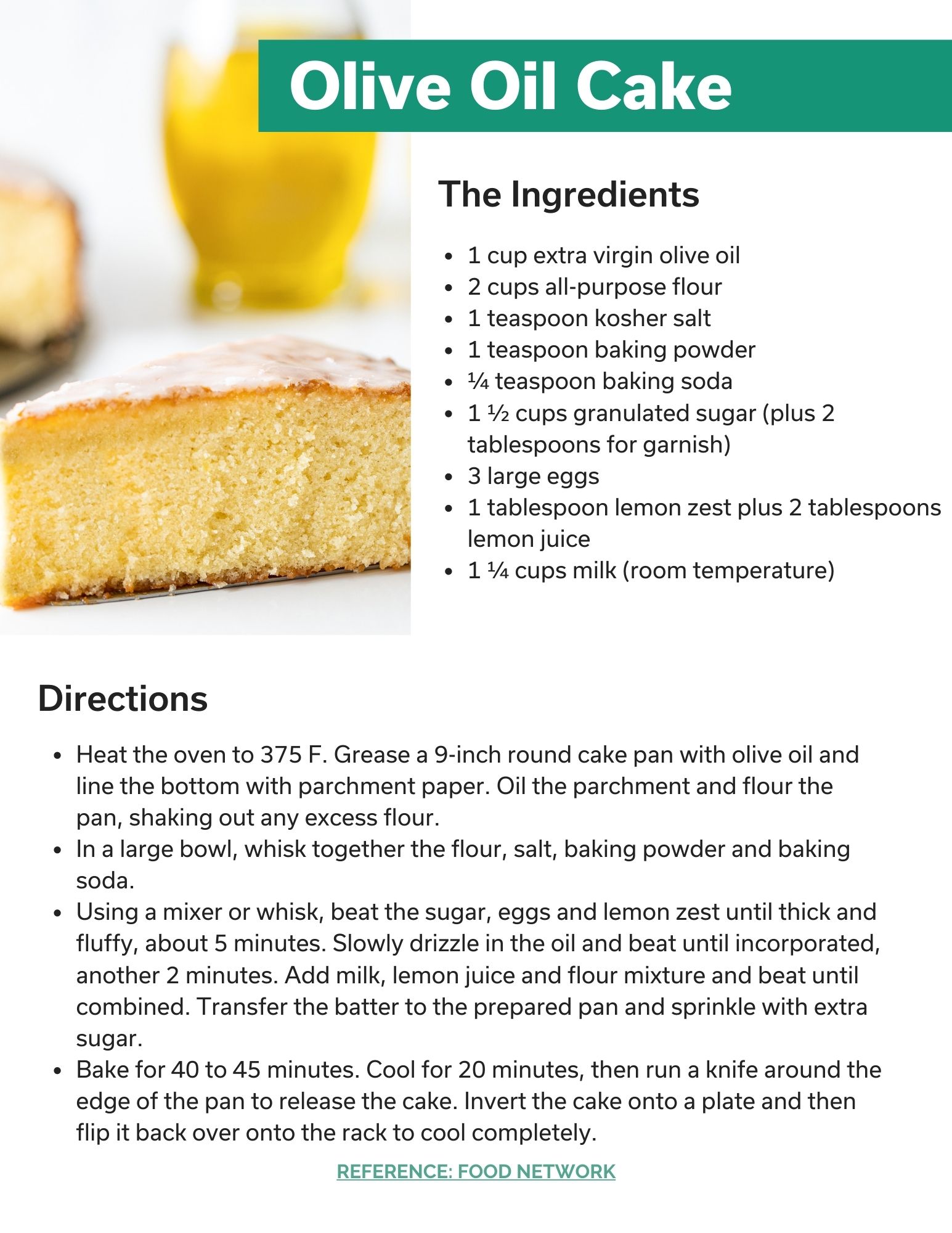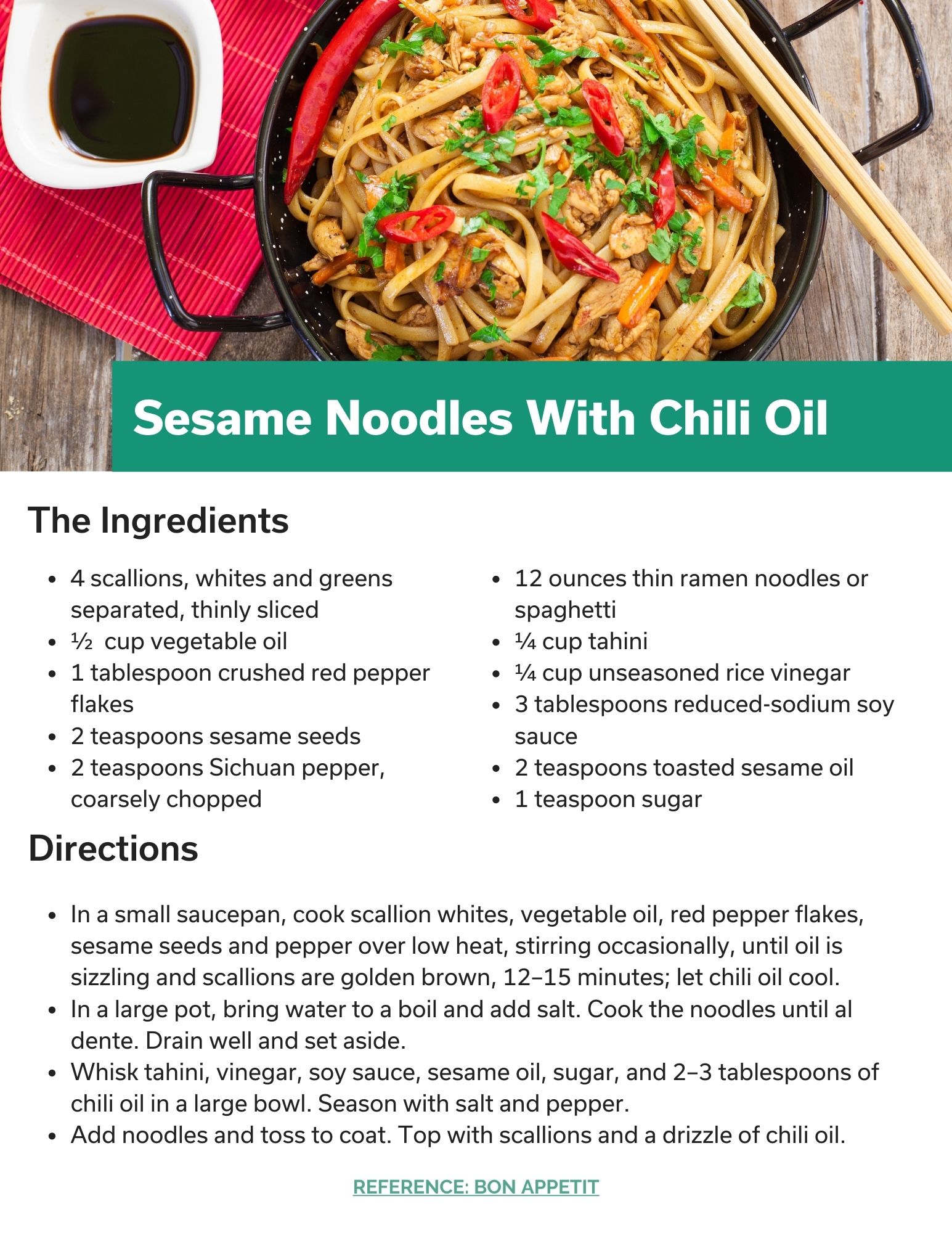Different Cooking Oils and Their Health Benefits

The cooking oils section in your local grocery store seemingly grows by the day. No longer do you have one or two options to choose from to whip up a weeknight meal. While the expansive cooking oil selection is nice to have, it can also create some confusion. Knowing which oils are healthy or the best to cook with is the first step, and we’re here to help you understand it all.
Types of cooking oils
Cooking oils contain three types of fat: saturated, monounsaturated and polyunsaturated.
Saturated fats
There’s a reason butter or the fat from your pot roast remains in a semi-solid state at room temperature. Fats contain carbon, hydrogen and oxygen, and in the case of saturated fats, they contain many hydrogen atoms bonded together with carbon chains.
Cooking oils high in saturated fat remain in a semi-solid state at room temperature, which explains why coconut oil (which contains 92 percent saturated fat) comes in a jar and needs heat to turn into a liquid.
Examples of cooking oils high in saturated fats include:
- Coconut oil
- Palm oil
- Palm kernel oil
Monounsaturated fats
Unlike saturated fats, monounsaturated fats have fewer hydrogen atoms and have a single carbon bond, also called a double bond. The bond’s presence keeps these fats liquid at room temperature and solid when chilled.
Examples of cooking oils high in monounsaturated fats include:
- Avocado oil
- Canola oil
- Olive oil
- Peanut oil
- Safflower oil
- Sunflower oil
Polyunsaturated fats
Whereas monounsaturated fats have one double bond, polyunsaturated fats contain two or more double bonds. Polyunsaturated fats remain a liquid even when chilled.
There are two types of polyunsaturated fats: omega-3 fatty acids and omega-6 fatty acids. Omega-3 fatty acids are mostly associated with fatty fish, such as salmon, and flaxseeds. Soybeans, walnuts, sunflower seeds and pumpkin seeds all contain omega-6 fatty acids.
Examples of cooking oils high in polyunsaturated fats include:
- Corn oil
- Flaxseed oil
- Grapeseed oil
- Soybean oil
Which cooking oils are good for your health?
As a general rule, choose cooking oils high in monounsaturated or polyunsaturated fats. This is both due to their health benefits and the negative impact saturated fats can have on heart health.
Avoid saturated fats
Saturated fats can cause high cholesterol and lead to dangerous blockages that cut off blood supply to important organs such as the heart and brain. This is why unhealthy diets, specifically high amounts of saturated fat, put you at risk for heart attacks and strokes.
The American Heart Association recommends eating just 13 grams of saturated fat per day, and they also suggest using oils that have fewer than four grams of saturated fat per tablespoon and are free of hydrogenated oils or trans fats. For example, a tablespoon of butter has eight grams of saturated fat.
Stick to monounsaturated and polyunsaturated fats
Instead of cooking with oils high in saturated fats, opt for plant-based vegetable oils, such as avocado or olive. These oils contain high levels of either monounsaturated fats or polyunsaturated fats.
When eaten in moderation, monounsaturated and polyunsaturated fats from plants can help lower triglycerides and LDL (bad) cholesterol levels. High levels of blood cholesterol can clog or block arteries in your blood vessels, increasing your stroke and cardiovascular risk. Cooking oils with high levels of monounsaturated and polyunsaturated also provide nutrients needed for cell health.
Polyunsaturated fats are essential fatty acids, meaning you need them to function. But, your body doesn’t make omega-3 and omega-6 fatty acids on its own, so you must get them from the foods you eat. Polyunsaturated fats help produce hormones that assist with everyday bodily functions such as blood clotting and muscle movement.
There are several types of both omega-3 and omega-6 fatty acids, although plant-based cooking oils contain two main types: alpha-linolenic acid (ALA) and linoleic acid (LA). ALA is an omega-3 fatty acid found in vegetable oils, walnut oil and flaxseed oil. LA is an omega-6 fatty acid found in safflower, soybean, sunflower, walnut and corn oils.
Best oils to cook with
The American Heart Association considers the following types of cooking oils healthy, meaning they are low in saturated fat and high in either monounsaturated or polyunsaturated fats.
Avocado oil
Whether it’s avocado toast or avocados in your smoothie, this buzzworthy fruit is gaining popularity in just about every area. Avocado oil is now a trendy choice among home cooks for many reasons. It has the highest smoke point of all plant-based oils, provides a rich, buttery flavor and is high in monounsaturated fat (65 percent).
Canola oil
Canola oil is a neutral-flavored versatile oil to cook with, as you can bake with it or use it to sear a steak. It also is high in monounsaturated fat (62 percent) and low in saturated fat (7 percent).
Corn oil
Corn oil is a popular oil to fry with due to its neutral flavor, high smoke point and low cost. It is high in polyunsaturated fat (62 percent) and omega-6 fatty acids.
Olive oil
A versatile oil you can use for both stove top cooking and as a dressing or finishing oil, olive oil is one of the healthiest oils you can cook with. It is high in monounsaturated fat (78 percent), and research shows a half-tablespoon of olive oil a day may help your heart. Extra virgin olive oil has a lower smoke point and isn’t ideal for high-heat cooking, although you can use it to sauté or to roast vegetables.
Peanut oil
Peanut oil is another popular option for high-heat cooking due to its slightly nutty flavor and high smoke point. It contains both monounsaturated (48 percent) and polyunsaturated fat (34 percent). However, it also has the most saturated fat (18 percent) among these recommended oils.
Safflower oil
This oil has gained popularity of late due to its combination polyunsaturated fat (75 percent) and versatility — it has a high smoke point but it’s also neutral enough to bake with.
Sesame oil
A common cooking oil found in many Asian recipes, sesame oil has a rich, nutty flavor with nearly equal amounts of monounsaturated fat (44 percent) and polyunsaturated fat (41 percent). Sesame oil is delicate and can turn rancid quicker than other oils, so you should store it in the refrigerator.
Soybean oil
Soybean oil is a common ingredient in packaged goods, ranging from salad dressings to tortilla chips. While it contains polyunsaturated fat (60 percent) and is high in omega-6 fatty acids, it also has higher amounts of saturated fat (15 percent) than other comparable oils.
Sunflower oil
Like other seed- or nut-based oils, sunflower oil is neutral-tasting with a slightly nutty flavor. Sunflower oil is high in monounsaturated fat (79 percent) and also contains vitamin E.
Using different oils in recipes
Since there are many different oils to choose from, we compiled three easy recipes you can try at home to expand your use of olive oil, sesame oil and avocado oil.
Olive Oil Cake
Most baking recipes call for a neutral oil such as canola or vegetable oil. These oils work well since they don’t compete with bold flavors. Sure, olive oil may overpower the taste of brownies or cookies, but it pairs perfectly in this recipe with the brightness of lemon and the subtle sweetness from the sugar.
Sesame noodles with chili oil
Pasta is a staple for a quick and easy weeknight Italian meal. Why not take a detour from the usual spaghetti and meatballs and travel to Asia with this noodle dish? This recipe calls for two types of oil: vegetable oil for the spicy base and toasted sesame oil for the nutty, savory sauce. Note we’re using toasted sesame oil, which is stronger than your usual sesame oil. A little goes a long way!
Quinoa salad with avocado oil dressing
The next time a recipe calls for a dressing, opt for avocado oil over the traditional olive oil or extra virgin olive oil. In this dish, the rich flavor from the avocado oil contrasts well with the acidic notes from the lemon juice and vinegar.
Understanding the smoke point of different oils
When cooking at home, have you ever noticed how quickly butter or bacon grease starts to smoke? That’s because both fats have a low smoke point, the temperature at which fats begin to oxidize, burn and smoke.
As an easy reminder, oils with a high smoke point are best for baking, frying and sautéing since these methods require high heat. Conversely, oils with a low smoke point are better suited for sauces or dressings.
Make a note that some oils are available as refined or unrefined. Refined oils are heated with a chemical solvent to extract the oils. Unrefined oils are minimally processed, and
you’ll often see these oils with a “cold-pressed” label on the packaging. In terms of health benefits, you’ll get the most out of oils in their raw, unrefined form. However, these oils are more expensive and, from an economical standpoint, may be best used in dips or sauces where you can enjoy their benefits.
Refined oils will have a higher smoke point compared to their unrefined counterparts due to how each is processed. For example, refined safflower and sunflower oils offer high smoke points above 400 degrees, while unrefined versions have a smoke point of less than 300 degrees.
Oils with high smoke points
- Avocado
- Hazelnut
- Peanut
- Refined vegetable oil
- Safflower
- Soybean
- Sunflower
Oils good for sautéing
- Corn
- Canola
- Hemp
- Grapeseed
- Olive
- Pumpkin seed
- Sesame
Oils best used to finish meals
- Flaxseed
- Pistachio
- Walnut
For more food and nutrition tips, visit the On Your Health blog.






